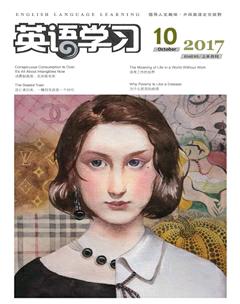中华文化术语选篇
“中华思想文化术语”是浓缩了中华哲学思想、人文精神、价值观念等的以词或短语形式固化的概念和文化核心词。它们是中华民族几千年来对自然与社会进行探索和理性思索的成果,积淀着中华民族最深沉的历史智慧。本文选登“中华文化术语”诠释和英文翻译,使中国人更加理解中国古代哲学思想,也使世界更加了解中华思想文化。
象外之象,景外之景
The Image Beyond an Image, the Scene Beyond a Scene
欣赏诗歌的过程中所产生的文本形象之外的第二艺术形象,是读者经联想产生的精神意象。前一个“象”、“景”指诗歌作品中直接描写的物象和景象, 后一个“象”、“景”则是指由此引发读者多方面联想所营造出的新的意象和意境。由道家与《周易》关于“言”(语言)、“意”(思想或意义)、“象”(象征某种深意的具体形象)三者关系的学说发展而来。魏晋至唐代的诗学倡导“象外之象,景外之景”,旨在追求文本之外的精神蕴涵和意象之美。这一术语同时也表现了中华民族的艺术趣味与审美境界。
Readers of poetry create images and scenes in their minds based on what they are reading. These are the readers imaginations based on what is depicted in the poems. The term comes from Daoist theories about the relationships between discourses, ideas or meanings, and images that symbolize profound meaning in The Book of Changes. From the Wei, Jin to the Tang Dynasty, poetry critics sought “the image beyond an image, the scene beyond a scene” in order to pursue the spiritual implications and the beauty of images that are beyond textual descriptions. This term gives expression to the artistic and aesthetic(审美的)tastes and ideals of the Chinese nation.
引例 Citations:
◎诗家之景,如蓝田日暖,良玉生烟,可望而不可置于眉睫之前也。象外之象,景外之景,岂容易可谈哉!(司空图《与[汪]极浦书》)
(诗歌所描写的景致,犹如蓝田蕴藏着美玉,玉的烟气在温暖的阳光中若隐若现,可以远远望见,但是不能就近清楚地观察。通过欣赏诗歌景象而产生的之外的景象,岂可容易表达出来呀!)
The imagery of poets is like the sunshine warming Lantian so that fine jades under its ground issue smoke: They can be seen from afar but not observed right before your eyes. The image beyond an image, the scene beyond a scene—are they not simply beyond words! (Sikong Tu: Letter to Wang Jipu)
◎盖诗之所以为诗者,其神在象外,其象在言外,其言在意外。(彭辂《诗集自序》)
(大概诗之所以成为诗,就在于神韵在物象之外,物象在语言之外,语言在意义之外。)
That which makes a poem a poem is a poetic appeal beyond the image, an image beyond the words and words saying things beyond their meaning.(PengLu: Preface to Collected Poems of Peng Lu)
信言不美,美言不信
Trustworthy Words May Not Be Fine-sounding; Fine-sounding Words May Not Be Trustworthy.
可信的话并不漂亮,漂亮的话多不可信。老子鉴于当时社会风气与文风的浮华不实,倡导返璞归真与自然平淡的生活方式和文学风格。魏晋时代,文人崇尚自然素朴,反对虚浮华丽的创作风气,出现了像陶渊明这样伟大的诗人,文艺创作也倡导真实自然的思想与风格。自此之后,中国古代文艺以素朴自然为最高的审美境界。
To address the extravagance(奢侈,过度)in social mores(风俗)and in the style of writing of his time, Laozi advocated simple and natural lifestyles and literary presentations. During the Wei and Jin dynasties, men of letters valued natural and simple literary styles and were opposed to extravagant and superficial styles. This line of thought led to the emergence of great poets like Tao Yuanming, and shaped literary writings to reflect direct thoughts and natural expressions. Subsequently, ancient Chinese literature and art took simplicity and naturalness as the highest aesthetic standards.
引例 Citations:
◎信言不美,美言不信。善者不辯,辩者不善。(《老子·八十一章》)
(可信的话并不漂亮,漂亮的话多不可信。善良的人往往不能能言善辩,能言善辩的人往往不善良。)
Trustworthy words may not be fine-sounding; finesounding words may not be trustworthy. A kind-hearted person may not be an eloquent(能言善辩的)speaker; a glib(能说会道的)person is often not kind. (Laozi)
◎老子疾伪,故称“美言不信”,而五千精妙,则非弃美矣。(刘勰《文心雕龙·情采》)
(老子憎恶虚伪矫饰,所以他认为“漂亮的话多不可信”。但他自己写的《道德经》五千言,思想深刻而文笔优美,可见他并没有摒弃文章之美。)
Laozi detested pretense, so he said, “Flowery rhetoric words may not be trustworthy.” However, the 5,000-word Dao De Jing (another name of Laozi) he wrote is not only profound in ideas but reads beautifully. That means he was not opposed to writings using fine words. (Liu Xie: The Literary Mind and the Carving of Dragons)endprint

